Pouring Innovation into Soil Mechanics: New Features for Modelling Water Effects in RS2
- Kien Dang, Director of Global Technical Development at Rocscience
Dive into the latest features of RS2, focused on adding more comprehensive water-modelling capabilities that will help you model unsaturated and undrained behaviour in your models efficiently and with greater certainty.
Unsaturated Behaviour
In unsaturated soils, matric suction (negative pore pressure) has been known to increase strength, as observed with vertical cuts of clays that have been stabilized without support.
RS2's innovative Single Effective Stress option (Figure 1), seamlessly integrates various parameters including degree of saturation, air entry suction, and matric suction to precisely adjust effective stress in the unsaturated zone. Additionally, the customizable user-defined table values gives you the flexibility tailor your analysis.
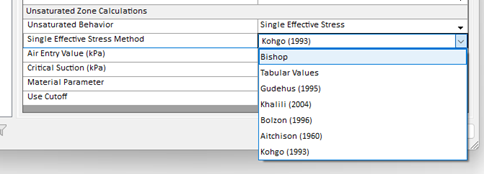
Upgrade the widely known Mohr-Coulomb material by incorporating Unsaturated Shear Strength option, which introduces an additional friction angle for the unsaturated zone as shown in Figure 2.
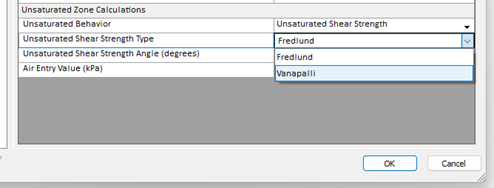
Unsaturated behaviour can also be handled directly by the selected constitutive model, such as the Barcelona Basic model.
Learn more about this topic on the Unsaturated Behaviours webpage.
Additionally, you can read this article of how unsaturated behaviour was necessary to conduct a study on the Effect of Concentrated Rainfall on Slope Stability with RS2.
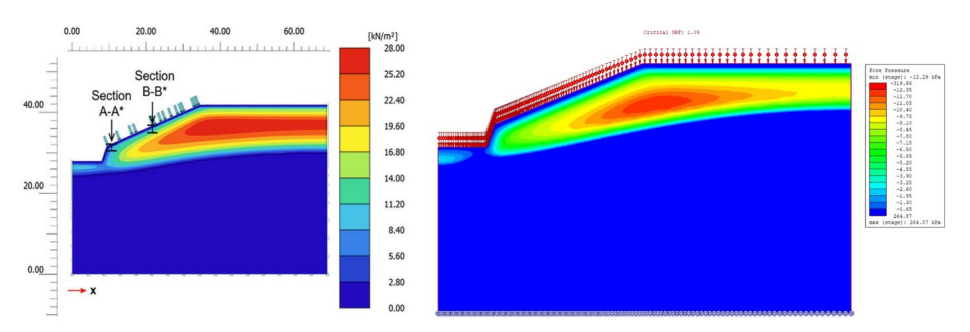
Undrained Behaviour
Another improvement is RS2’s undrained effective stress analysis for soil layers. Previously, coupled consolidation analysis allowed the use of a Biot’s coefficient to moderate the influence of pore pressure in effective stress calculations. This option has now been extended to all other consolidation option types to allow even more modelling flexibility. Effective stress calculations also consider the degree of saturation for improved accuracy. You will find this option in the Hydraulic Properties dialog as shown in Figure 4.

Learn more on the Define Hydraulic Properties webpage.
New options for Mv, the compressibility coefficient
The compressibility coefficient (Mv) accounts for the compressibility of water and the effect of the solid deformation on the fluid flow. It is critical for transient groundwater analysis in describing the solid-fluid interaction when we are not using a coupled consolidation analysis, which uses another approach to model this behaviour.
Previously, you would disable or enable Mv, which has now been replaced by None and Constant options respectively, as shown in Figure 5 (a). As shown in Figure 5 (b), we have added new Fluid, 1D Elastic consolidation, and 2D Elastic consolidation Mv model types to provide flexibility in considering the soil-fluid interaction.
Learn more about this on the Mv section of the Define Hydraulic (Seepage Analysis) webpage.
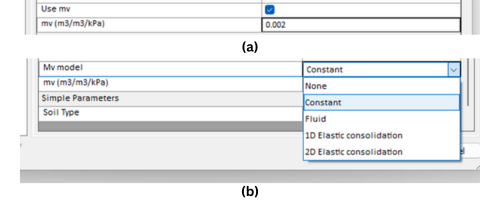
With the new Mv models, you can solve consolidation problems using an uncoupled approach with significant time savings compared to the conventional coupled approach. In Verification 8, Uncoupled Two-Dimensional Consolidation, we examined the excess pore pressure dissipation beneath a constant pressure load under drained conditions with a permeable surface and impermeable base using an uncoupled (Mv model) and coupled approach as shown in Figure 6. It was found that using the uncoupled Mv model approach achieved comparable results to the coupled approach, but with 38% reduced computation time.
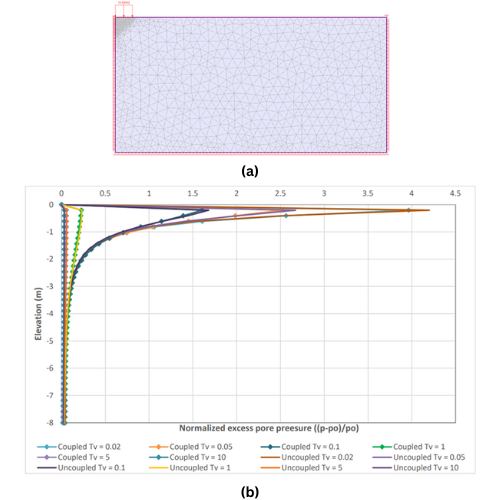
Moisture Content in Unit Weight
Additionally, there are new ways to account for moisture content in unit weight. As shown in Figure 7, simply activate the Account for Moisture Content in Unit Weight checkbox and input the Dry Unit Weight, Moist Unit Weight, and Saturated Unit Weight. These represent fully dry, above the ground water level in nature, and fully submerged soil condition respectively. For enhanced accuracy, factor in the degree of saturation alongside various soil conditions. RS2 will dynamically adjust the unit weight based on the provided inputs. Learn more on the Material Unit Weight webpage.

Define the Soil Water Characteristic Curves using Degree of Saturation
The Soil Water Characteristic Curves (SWCC) is a vital component in defining the permeability behaviour in unsaturated soils. In the past, the SWCC was defined using water content, but now you can utilize degree of saturation. As shown in Figure 8, simply (a) enter the saturated and residual degree of saturation or (b) customize a user-defined table. Learn more on the Degree of Saturation section of the Define Hydraulic (Seepage Analysis) webpage.
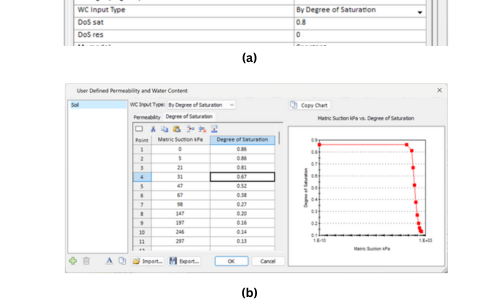
Summary of New Features
To summarize the article above, there have been a number of improvements in RS2’s for modelling water including:
- New ways to capture unsaturated behaviour using the Single Effective Stress approach.
- Improvements in effective stress calculation in undrained materials using Biot’s coefficient.
- More ways to use Mv to solve consolidation problems using a faster, uncoupled approach.
- More ways to consider moisture content in the unit weight.
- Finally, you can now define the soil water characteristics curves using degree of saturation.
Discover the all-new features for modelling water effects in RS2!
Start a free trial of RS2 today.
Free Trials